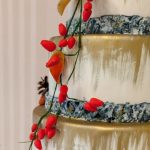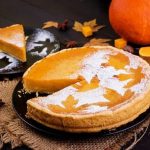Are you looking to step up your cake decorating game? Learning how to prepare frosting for cake decorating is a crucial skill to master. Frosting not only adds sweetness and flavor but also serves as the canvas for your creative designs. In this article, we will explore the different types of frosting, essential ingredients, step-by-step guides, tips, techniques, common mistakes to avoid, and unique cake decorating ideas using frosting.
Frosting plays a vital role in cake decorating by providing a smooth and even surface for the decorations. It also holds the different elements of the design together and can elevate the visual appeal of any cake. Whether you’re a baking enthusiast or a professional pastry chef, understanding the importance of frosting in cake decorating is key to creating stunning and delicious works of art.
In addition to discussing the importance of frosting in cake decorating, we will also delve into various types of frosting such as buttercream, royal icing, fondant, and cream cheese frosting. Each type of frosting offers unique characteristics and flavors that can complement different types of cakes and designs. Understanding these options will allow you to choose the best frosting for your specific cake decorating needs.
Types of Frosting
Buttercream, royal icing, fondant, and cream cheese frosting are some of the most popular types of frostings used in cake decorating. Each type has its own unique texture, flavor, and application that can make a cake stand out.
Buttercream frosting is a classic choice for cake decorating due to its creamy texture and ability to hold its shape when piped or spread onto a cake. Made from butter, powdered sugar, and flavorings such as vanilla extract or cocoa powder, buttercream frosting is versatile and can be easily tinted with food coloring to create different colors for decorating.
Royal icing, on the other hand, is made from beaten egg whites and powdered sugar, giving it a smooth and glossy finish when dried. This type of frosting is commonly used for intricate designs like piping flowers or intricate patterns onto cakes and cookies.
Fondant is another type of frosting that can be rolled out into sheets and draped over a cake for a smooth, flawless finish. It is often used for creating decorative accents like bows or ribbons on cakes.
Finally, cream cheese frosting offers a tangy flavor that pairs well with red velvet or carrot cakes. Made from cream cheese, butter, powdered sugar, and vanilla extract, this type of frosting can be easily spread onto cakes or piped into decorative swirls.
No matter the type of frosting you choose to use for your cake decorating project, understanding the different characteristics of each will help you achieve the desired look and taste for your baked creations. And remember learning how to prepare frosting for cake decorating isn’t just about taste but about aesthetics too so make sure you take time learning about how more experienced people decorate with the different frostings available on the market.
Essential Ingredients for Frosting
When it comes to cake decorating, the frosting is one of the most essential elements. Whether you’re a beginner or an experienced baker, knowing how to prepare frosting for cake decorating is crucial in achieving the perfect finish for your cakes. There are various types of frosting that you can use for decorating, such as buttercream, royal icing, fondant, and cream cheese frosting. Each type has its own unique characteristics and uses.
One of the most popular and versatile frostings used in cake decorating is buttercream. To make a basic vanilla buttercream frosting, you will need unsalted butter, powdered sugar, vanilla extract, and a small amount of milk or heavy cream.
Creaming the butter and gradually adding the sugar until light and fluffy is key to achieving the right consistency. Once you have your base recipe down, you can experiment with different flavor variations and food coloring to create custom frostings for your cakes.
In addition to buttercream frosting, food coloring plays an important role in creating visually appealing decorations on cakes. Gel food coloring is recommended for achieving vibrant colors without altering the consistency of the frosting. It’s important to use a small amount at a time and gradually add more until you reach your desired shade. This allows you to have greater control over the color intensity and prevents any mishaps that could affect your cake decorating efforts.
| Buttercream Frosting Recipe | Ingredients |
|---|---|
| Unsalted Butter | 1 cup (226g), softened |
| Powdered Sugar | 4 cups (480g) |
| Vanilla Extract | 1 tsp (5ml) |
| Milk or Heavy Cream | 2-3 tbsp (30-45ml) |
By mastering the art of preparing various types of frosting and understanding how to use essential ingredients like butter, sugar, vanilla extract, and food coloring effectively, you can elevate your cake decorating skills and bring your sweet creations to life.
Step-by-Step Guide to Making Buttercream Frosting
Buttercream frosting is a classic choice for cake decorating, known for its creamy texture and delicious flavor. Whether you’re a beginner or experienced baker, mastering the art of making buttercream frosting is essential for creating beautifully decorated cakes. Below is a step-by-step guide to making buttercream frosting from scratch.
Ingredients
- 1 cup (2 sticks) unsalted butter, softened
- 4 cups confectioners’ sugar, sifted
- 2 teaspoons pure vanilla extract
- Pinch of salt
- 2-3 tablespoons heavy cream or milk
Instructions
- In a large bowl, beat the softened butter with an electric mixer on medium speed until creamy.
- Add the sifted confectioners’ sugar to the bowl, one cup at a time, mixing on low speed until well combined.
- Once all the sugar has been incorporated, add the vanilla extract and pinch of salt to the mixture. Mix on medium speed until smooth.
- If the frosting seems too thick, gradually add heavy cream or milk one tablespoon at a time until it reaches your desired consistency.
- The buttercream frosting is now ready to use for decorating your cake.
Once you have mastered this basic buttercream recipe, you can experiment with different flavors and colors by adding extracts such as almond or lemon, or using gel food coloring. This versatile frosting can be used for piping intricate designs, creating smooth finishes on cakes, and even making decorative borders. With this step-by-step guide, you’ll be well-equipped to prepare delicious and visually appealing buttercream frosting for all your cake decorating needs.
Tips for Creating Different Colored Frostings for Decorating
Creating different colored frostings for cake decorating can add a beautiful and visually appealing touch to your cakes. Whether you are looking to make a vibrant birthday cake or elegant wedding cake, knowing how to create different colored frostings is essential for any baker or cake decorator.
Here are some tips for creating different colored frostings for cake decorating:
1. Use gel food coloring: When coloring frosting, it’s best to use gel food coloring as it provides more vibrant and intense colors compared to liquid food coloring. Gel food coloring also does not alter the consistency of the frosting, allowing you to achieve the desired color without affecting the frosting’s texture.
2. Start with a small amount: When adding food coloring to your frosting, start with a small amount and gradually add more until you reach your desired shade. It’s easier to darken the color than it is to lighten it, so adding slowly ensures that you don’t end up with an overly dark frosting.
3. Mix well: To ensure an even distribution of color, mix the food coloring into the frosting thoroughly. Use a spatula or hand mixer to blend the color evenly throughout the frosting, ensuring that there are no streaks or patches of undyed frosting.
By following these tips, you can create beautifully colored frostings for decorating cakes for any occasion. Whether you’re aiming for pastel shades or bold colors, mastering the art of creating different colored frostings will elevate your cake decorating skills and impress anyone who enjoys your delicious creations.
Techniques for Applying Frosting to Cake
When it comes to cake decorating, the way you apply frosting to your cake can make a huge difference in the final result. There are several techniques for applying frosting to a cake, each of which can create a unique and beautiful design. Whether you’re looking to create intricate designs with piping, achieve smooth and even coverage with spreading, or add detailed patterns with stenciling, mastering these techniques is essential for creating beautifully decorated cakes.
Piping
Piping is a versatile technique that allows you to create intricate designs on your cakes using a piping bag and various tips. From swirls and rosettes to intricate borders and lettering, piping adds depth and detail to your cake decorations. To master the art of piping, it’s important to practice different pressure levels and angles when using the piping bag. Additionally, experimenting with different tips can help you create a wide range of creative designs.
Spreading
Spreading frosting onto a cake may seem simple, but achieving a smooth and even finish requires some skill. To ensure that your cake is perfectly covered, start by applying a thin layer of frosting as a base coat. Then, use an offset spatula to spread additional layers of frosting evenly across the cake’s surface. Taking your time and using long, steady strokes will help you achieve an effortlessly smooth finish.
Stenciling
Stenciling is a fun way to add intricate patterns and designs to your cakes using frosting. By placing a stencil over the surface of your cake and gently spreading or piping frosting over it, you can create stunning patterns and textures. Stencils come in a variety of shapes and designs, allowing you to customize your cake decorations to suit any theme or occasion.
Mastering these techniques for applying frosting to cakes is key in achieving beautiful and professional-looking creations that will impress friends and family alike. Whether you’re looking to create elegant swirls with piping, achieve flawless finishes through spreading or add intricate patterns with stenciling, there’s no limit to the creativity you can unleash with frosting.
Common Mistakes to Avoid When Preparing Frosting
Preparing frosting for cake decorating can be a fun and creative process, but it’s important to avoid some common mistakes that can affect the final result of your decorated cake. One of the most common mistakes when preparing frosting is not ensuring that the butter or cream cheese is at room temperature before starting.
Cold butter or cream cheese can result in lumpy frosting, making it difficult to achieve a smooth and creamy consistency. To avoid this mistake, make sure to take the butter or cream cheese out of the refrigerator well in advance and allow it to soften at room temperature.
Another common mistake when preparing frosting is adding too much liquid too quickly. Whether it’s milk, cream, or flavoring extracts, adding too much liquid at once can cause the frosting to become runny and difficult to work with. The key is to add liquid gradually, while continuously mixing and testing the consistency until you achieve the desired texture.
Additionally, using the wrong type of sugar can also lead to problematic frosting. Powdered sugar, also known as confectioner’s sugar or icing sugar, is the best option for making frosting due to its fine texture. Using granulated sugar will result in a grainy texture, which is not ideal for decorating cakes. It’s important to use the correct type of sugar for your frosting recipe to ensure a smooth and silky finish.
By avoiding these common mistakes and following proper techniques for preparing frosting, you’ll be able to create delicious and visually stunning cakes that are perfect for any occasion. Whether you’re making buttercream, royal icing, fondant, or cream cheese frosting, attention to detail in preparation will significantly impact your cake decorating results_.
Creative and Unique Cake Decorating Ideas Using Frosting
In conclusion, frosting plays a crucial role in cake decorating, as it not only adds sweetness and flavor but also provides the perfect canvas for creative designs. From buttercream to royal icing to fondant, there are various types of frosting that can be used to achieve different decorating effects. Regardless of the type of frosting you choose, the essential ingredients include butter, sugar, vanilla extract, and food coloring.
One popular type of frosting is buttercream, which can be easily made at home with a few simple steps. By following a step-by-step guide, you can prepare smooth and creamy buttercream frosting that is perfect for decorating cakes. Additionally, learning how to create different colored frostings using food coloring opens up a world of possibilities for decorating cakes with vibrant and eye-catching designs.
When it comes to applying frosting to a cake, there are various techniques that can be used such as piping, spreading, and stenciling. Each technique offers its own unique way of creating intricate and beautiful designs on cakes. However, there are also common mistakes that should be avoided when preparing and applying frosting in order to achieve professional-looking results.
Overall, with the right tools and knowledge on how to prepare frosting for cake decorating, you can unleash your creativity and come up with unique and visually stunning cake decorations that will leave a lasting impression on anyone who sees or tastes your masterpiece. So go ahead and explore the endless possibilities of cake decorating using frosting.
Frequently Asked Questions
Should I Refrigerate Frosting Before Piping?
Refrigerating frosting before piping can help it hold its shape better, especially if the frosting is too soft. This is particularly true for buttercream and cream cheese frostings, which can benefit from being chilled before use.
Should I Heat Up Frosting Before Putting It on a Cake?
Heating up frosting before putting it on a cake is typically not necessary for most types of frosting. However, if the frosting is too thick or stiff, gently warming it up can make it easier to spread or pipe onto the cake. Be careful not to overheat it though, as this can cause it to become too runny.
How Do You Make Store Bought Frosting Good for Decorating?
To make store-bought frosting good for decorating, you can start by whipping it with a mixer to add air and improve its consistency for piping and spreading. Adding a little bit of powdered sugar or cornstarch can also help thicken the frosting and make it more suitable for decorating purposes.
Additionally, adding flavor extracts or food coloring can enhance the taste and appearance of the frosting for decorating purposes.

Welcome to my blog about home and family. This blog is a place where I will share my thoughts, ideas, and experiences related to these important topics. I am a stay-at-home mom with two young children. I hope you enjoy reading it! and may find some helpful tips and ideas that will make your home and family life even better!





